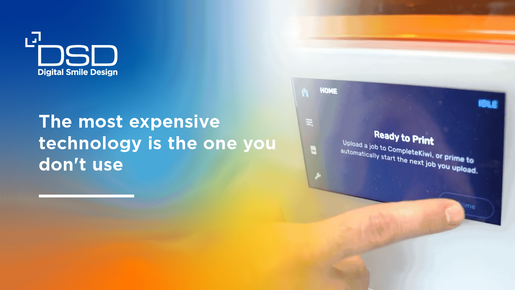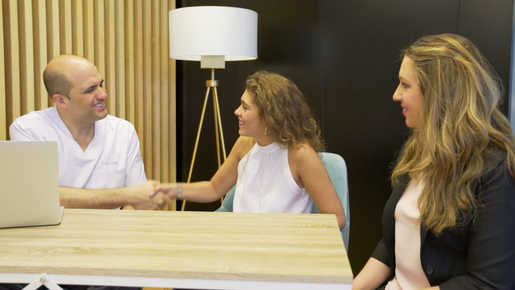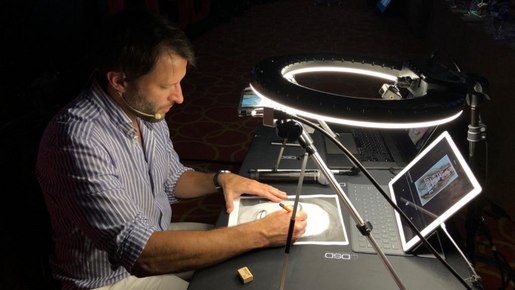
By Digital Smile Design
⋅ min read
⋅ Updated Jan, 2025

There’s no denying that technology brings significant benefits to dental offices, but we all know that there can be a learning curve before you start to take full advantage of them on a daily basis.
In our recent roundtable discussion in collaboration with Formlabs Dental, Christian Coachman and George Cabanas had the opportunity to discuss this with DSD Clinic owners Dr Sheena Sood of Ironwood Dental Care and Dr Viorela Bauer of Bauer Dental Center. In this informative session, they shared their experiences of bringing 3D printing in house, how their team became empowered to manage the workflows, and the advantages they have experienced in their clinics. They also spoke about the unquestionable value of reliable support when it comes to implementing seamless workflows.
Empowering your team to manage 3D printing in your office
When as a clinician your time and effort is best spent on clinical procedures, it’s vital to have a team who can take things off your plate when it comes to implementing new technologies. Dr Sood explains the advantages of allowing her team to take the reins when it comes to 3D printing: “From a user perspective, I'm not so technically oriented. What I do know is that when I got my Formlabs, I was not trained to print: we bought it, my staff took the training, they learned everything, they do it all. I don't touch the printer. I know the basics, I understand the basics, but I really don't do anything. My printer literally runs throughout the day, every day. I have three people in my team trained to use it, because if one is away and we need the printer, someone else has to know what they're doing because I certainly don't know how to do it. I offload all of this to my team. So, for a dentist who is considering this as an investment: number one it is a huge ROI. Huge. And second is you can delegate this to your team easily. I had one of my team members who said: ‘I am the least technical person in this office.’ She learned to print and it was amazing. She was trained by Formlabs Dental and George. It was not this huge process; they did one little webinar that Formlabs Dental provides with the printer. They were able to print models right away and they were able to do almost everything. Then, slowly, they practiced and learned and they talked to George about the finer aspects of printing.” Dr Bauer agrees: “Like Sheena, I don't touch the printer: I look at the printer, I show the printer to my patients. They're impressed and so am I, but that's about it. I tell the team what to do and they do it.”
Overcoming the learning curve with 3D printing
What are the types of products that can be easily 3D printed in house, and how does the team approach the learning process for them? Dr Sood recounts how long it took her team to become proficient in printing workflows for a range of products with the Formlabs Dental printer: “The learning curve was very fast as I said. With my team, I think within a day they were able to print models. DSD Shells took a bit more time. They had to speak to George just because the support system and the way they print is a little more difficult. Because we work with the DSD Planning Center, they design the products and then we are able to print them, but it really was a plug-and-play system. The only thing that I'm waiting for is printed ceramics, but we print everything that you mentioned. We print surgical guides, Clic Guides. We printed dentures in-house. I started in 2018 and it took about, I would say, about six months until we were printing basically everything.” Like with any new technology or process there’s a learning curve, and being able to see the results her team were producing was key in encouraging Dr Sood to rely more and more on in-office printing: "At the beginning, I wasn't quite sure. So, I would order some. For instance, my very first Clic Guide I ordered manufactured by DSD, which actually happened to be for my father. Then we also had the files and we printed it in house and I compared the manufacture of what I had received from the lab to what we printed in-house and they were identical. So that gave me a lot of confidence that my team was doing a very good job. The printer was very accurate." In a similar way, Dr Bauer highlighted that the learning curve in her clinic was quick and easy to overcome with the support of Formlabs Dental: “I think about a month or two. We started printing right away. Yes, at the beginning, we would print it the wrong way, like where the supports were, so that took a little bit of time, but then once they figured it out, it's very fast.” And once the team has mastered the process, there’s no holding them back! For Dr Bauer, her team members quickly became accustomed to modern ways of working: “I had a couple of my staff members move to different states and everything and they go back to the old ways and they just can't do it. They're like: ‘Where's the printer?’ They can't do it without a printer.”
The benefits of in-house 3D printing for dental offices
Bringing 3D printing workflows in house offers advantages not only for clinicians and dental teams, but also for patients. Dr Sood pointed out the benefits of this technology when it comes to turnaround times in her dental office: “Because we are able to print, it's so much faster because we're not waiting for products or things to be shipped. Even if it's a day, we can instantly produce something in our office. This is magic. We've had patients come in that want a mock-up really quickly and we're able to do that because we have the technology.” When you don’t need to rely on an external lab for all your printing needs, another key benefit is flexibility. Dr Bauer highlighted the difference this has made in her clinic: “The benefit is not only like Sheena was saying: when you schedule your surgery and then sometimes you’re waiting for the lab to fabricate it and ship it. Sometimes it gets stuck in customs too. It says: ‘Oh, it'll be there in a week,’ and then it's not in your office. Then you have the surgery set up for the second date – you don't have that flexibility to wait. Also if something happens, sometimes - let's say - somebody drops your surgical guide and it breaks, you have the ability to just push a button and print it and it's done. So, that is a great advantage as well."
Training your team to manage 3D printing technology
Team training can often be a significant roadblock when it comes to implementing new technology in a dental office. From getting them onboard with the ideas to upskilling them in the workflows, it can take time and effort to manage effectively. Dr Sood explained the value of the support provided by Formlabs Dental and George Cabanas in the training process at her dental office: “They do the website training, and then any time they have more complex questions, they just call Formlabs Dental; someone at Formlabs Dental would guide them through every issue that they had. The most expensive technology is the one you don't use. So, if it's too complex and it's too hard, staff definitely won't take it on; they will get frustrated by it. They have so many duties during the day, but when they can easily ask questions and they feel comfortable talking to someone, knowing that they're going to answer the question, it makes it easy. I'm like: ‘Oh, what do we do about this? What happened?’ They're like: ‘No problem. I'll call Formlabs. They'll take care of it.’ That is a huge bonus for Formlabs: that interaction and the ability to connect with them.” After years of experience working with different 3D printers here at the DSD Lab, the excellent technical support offered by Formlabs Dental is one of the key reasons which has led us to rely on them for our 3D printing workflows. The availability of phone and email support, as well as customized training sessions, are just two key factors which make this so successful.
Watch the roundtable
To learn more about how you can successfully bring 3D printing workflows in house, as well as the important aspects to consider when it comes to choosing the right 3D printer for your dental office needs, you can catch the full replay of our roundtable discussion here:




